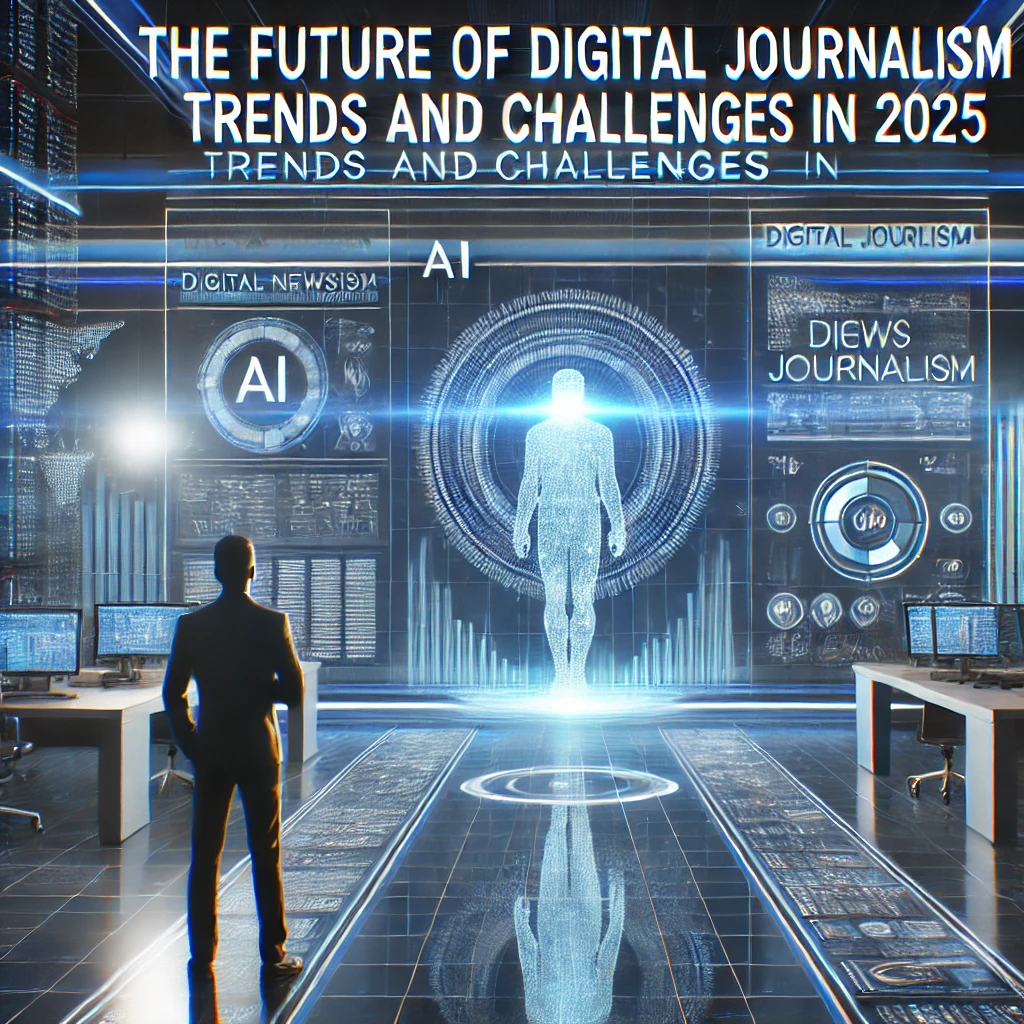The Future of Digital Journalism: Trends and Challenges in 2025
Introduction
Digital journalism is evolving rapidly, driven by technological advancements and changing consumer behaviors. With the rise of artificial intelligence, mobile-first content, and increasing concerns over fake news, the media industry is at a turning point. In this article, we explore the latest trends, challenges, and opportunities shaping the future of digital journalism in 2025.
1. The Rise of AI-Driven Journalism
Artificial Intelligence (AI) is revolutionizing the way news is produced and distributed. AI tools help journalists with:
Automated news writing: AI-powered algorithms can generate short news articles based on real-time data, such as financial reports and sports results.
Fact-checking: AI systems can quickly verify the authenticity of news sources and prevent the spread of misinformation.
Personalized content delivery: AI analyzes user behavior to provide customized news feeds based on preferences.
Despite its advantages, AI raises ethical concerns about credibility and the potential loss of human jobs in journalism.
2. Mobile-First and Short-Form Content
With over 70% of internet users accessing news on mobile devices, media houses are focusing on:
Short-form video content on platforms like Instagram Reels, YouTube Shorts, and TikTok.
Interactive storytelling with infographics, polls, and live Q&A sessions.
Push notifications to deliver breaking news instantly to users.
Traditional long-form articles still have value, but they must be complemented by engaging, bite-sized content.
3. The Battle Against Fake News
Fake news continues to be a major challenge in digital journalism. To combat misinformation, media organizations are:
Using blockchain technology to verify and authenticate sources.
Implementing AI-powered fact-checking tools to flag false information.
Encouraging digital literacy among readers to help them differentiate between credible and misleading content.
Governments and tech companies are also introducing stricter regulations to curb the spread of misinformation.
4. Subscription-Based and Ad-Free News Models
As ad revenues fluctuate, many news platforms are shifting towards subscription-based models, including:
Paywalls: Premium articles available only to subscribers.
Membership programs: Exclusive content and benefits for paid members.
Donations & crowdfunding: Users voluntarily support their favorite news platforms.
While these models ensure high-quality journalism, they also raise concerns about access to free and unbiased news for everyone.
5. The Role of Independent Journalism
With the rise of corporate-owned media, independent journalists and small news agencies are gaining traction through:
Newsletter platforms like Substack and Medium.
Crowdsourced journalism where readers contribute directly.
Decentralized news platforms that provide unbiased reporting.
Social media has empowered independent voices, but it also brings challenges in verifying credibility and ensuring financial stability.
Conclusion
The future of digital journalism is both exciting and challenging. AI, mobile content, and independent journalism are transforming the way we consume news, but issues like fake news and monetization need to be addressed. As technology continues to evolve, media organizations must adapt to maintain trust, credibility, and quality in the digital age.
What’s Next?
Do you think AI will replace journalists? How can we ensure accurate news in a digital world? Share your thoughts in the comments below!


